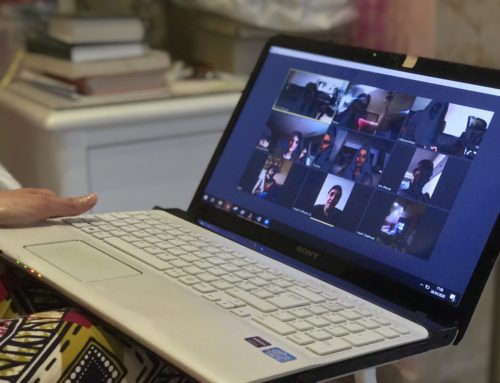
Peter Panepento
Our public relations expert Peter Penepento is back this month to share some ideas on getting the word out about your good cause without using the media. ~Kristina
Guest Post by Peter Panepento of Panepento Strategies
Who do you think of first when you’re about to launch a new campaign or release a piece of important new research?
In the not-so-distant past, that answer was easy: you wanted to reach the media.
After all, a story in the newspaper or a spot on the TV news would give your charity wide reach and would lend an air of credibility to your efforts.
For today’s nonprofit communications pro, however, the answer to this question isn’t quite as clear cut.
Yes, newspapers and TV stations are still important — and depending on your market and goals, a story placement can be quite valuable.
But before you make the knee-jerk decision to develop a meaty media kit for your next big campaign, take a step back and consider whether this is really the best path.
In many cases, the audience you’re trying to reach these days is fragmented. And the news hole in your local newspaper is probably a lot smaller than it used to be.
At the same time, you actually have the opportunity to reach more people by amplifying your message through another channel — your network of supporters.
No matter your size or your focus, you likely have access to distribution channels that you might not have dreamed of a decade ago.
Almost all of your board members, donors, and volunteers has her own broadcast network through her social networks. And if you can give her the tools she needs, she can essentially become a reporter — helping to relay your message to her hundreds of Facebook friends, LinkedIn connections, and Instagram followers.
Multiply 50 key supporters by the hundreds of people in their personal networks and suddenly you’ve generated a lot of reach for your new campaign.
So how do you activate this network?
A number of smart organizations are eschewing the process of creating elaborate media kits and are instead focusing their efforts on developing toolkits that are aimed at getting their key supporters to help spread the message for them.
Instead of creating blandly worded news releases with official-sounding quotes from the executive director, they are giving their supporters sample tweets, Facebook posts, graphics, and videos that they can modify and share in their own words.
They are sending these messages to their most engaged supporters though personal messages that thank them for their past support and encourage them to help advance their missions in a new way.
As a result, they are both creating a touchpoint with their supporters and getting them to help spread the word for them in their own voices and with their own close connections.
In some cases, they are also getting the media to notice without having to directly approach reporters or editors. These reporters and editors are often connected to your supporters — and might be more apt to notice a personal mention of a new report or campaign from one of their friends than they would be to notice the news release in their email boxes. Most reporters would actually rather find a story organically rather than through official channels.
If you’re thinking of creating a toolkit, here are some pieces to consider including:
Sample social media posts — Provide your supporters with some suggested posts for Twitter, Facebook, Instagram, and/or LinkedIn about your campaign or initiative. Include a hashtag and make it clear that they are encouraged to share it in their own personal style. Pay attention to the hashtag and be sure to thank those who share.
Infographics — If you’re releasing new research or are sharing new information, consider creating an infographic that your supporters can share in their own networks. If you’re on a tight budget, consider free tools like Piktochart or Canva.
Blog posts/opinion pieces — For supporters who have their own blogs, consider providing them with ideas for sample posts — or consider providing them with a guest post written by someone on your team.
Videos — Embeddable videos are easily shared — and are appealing to some of your supporters.
These elements — and others — can be packaged together and introduced to your key supporters though a personal email.
They should also be included on a prominent page on your website — with easy-to-understand prompts for sharing and reusing.
It might sound simple, but thinking about your supporters as individual media outlets can help you gain more reach and achieve greater results than a traditional media outreach effort.
Has your organization tried this approach? I’d love to see your examples and hear how it has worked.
Peter Panepento is principal at Panepento Strategies, a full-service content, digital, and social strategy firm for nonprofits and socially-minded companies. He was formerly an assistant managing editor at the The Chronicle of Philanthropy, where he led its transition into digital journalism and social media — a transition that included the creation of some of the nonprofit world’s richest online communities, the launch of a highly profitable webinar series, and the creation of new digital products such as the How America Gives giving database.






